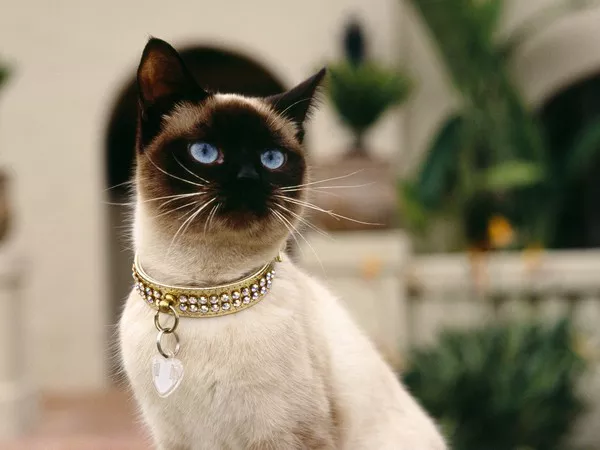Chartreux cats, with their striking blue-grey coats and brilliant orange eyes, are not only a sight to behold but are also known for their calm demeanor and affectionate nature. Originating from France, these cats are often described as having a dog-like personality due to their loyal and gentle characteristics. However, like any breed, Chartreux cats can exhibit periods of increased activity and behavior that may require a deeper understanding and appropriate training techniques to manage. This comprehensive article will delve into the developmental stages of Chartreux cats, explain when they typically calm down, and provide effective training tips to foster a serene and harmonious living environment.
Understanding Your Chartreux Cat
Before delving into training and management strategies, it is essential to understand the unique traits and developmental stages of your Chartreux cat.
Historical and Breed Background
The Chartreux is a historic French breed known for its robust health and placid temperament. They are often described in literature as “potato on toothpicks” owing to their muscular, robust body topped with relatively fine-boned limbs. Their history as hunt-and-kill rodents in monasteries perhaps explains their quiet nature, stealthy movements, and exceptional hunting skills.
Developmental Milestones in Chartreux Cats
Kitten Phase (0-6 Months): Chartreux kittens are typically lively and playful. They explore their environment and start learning the basics of cat behavior through interactions with their mother and littermates.
Juvenile Phase (6 Months – 2 Years): This phase is crucial as the cat matures sexually and socially. Chartreux may display more energetic and sometimes erratic behavior during this stage. They are learning the boundaries of their environment and social structure.
Adulthood (2 Years and Beyond): Most Chartreux will start to show a reduction in hyperactivity around the age of two, gradually transitioning into the calm and composed cats that the breed is known for.
When Will My Chartreux Cat Calm Down?
Understanding when your Chartreux cat will calm down requires a look into both its age and individual personality.
Age-Related Calming
Chartreux cats are known for their relatively calm disposition, but they typically settle down and become less hyperactive as they transition out of their juvenile phase at around two years old. This is when their true personality, often described as calm, reserved, and affectionate, becomes more apparent.
Individual Temperament
Each cat is unique, and some may retain a playful, kitten-like demeanor longer than others. Factors such as genetics, environment, and early socialization also play significant roles in shaping the overall temperament of your Chartreux.
Effective Training Tips for Your Chartreux Cat
Training your Chartreux effectively involves understanding cat psychology, proper socialization, and the use of positive reinforcement techniques.
Establish a Routine
Cats are creatures of habit. Establishing a routine helps reduce anxiety and promotes a sense of security, leading to a calmer demeanor.
Feeding: Stick to scheduled feeding times. This not only helps in managing weight but also instills a routine.
Playtime: Regular, scheduled play sessions can help manage energy levels and reduce hyperactivity.
Socialization and Environmental Enrichment
Proper socialization from a young age is crucial for developing a well-adjusted cat. Exposure to various stimuli like different people, pets, and environments can help prevent anxiety and fearfulness in unfamiliar situations.
Environmental Enrichment: Keep your Chartreux mentally stimulated and physically active to avoid boredom and destructive behavior. Use puzzle feeders, toys, and regular interaction.
Training Basics
Chartreux cats are intelligent and can be trained using positive reinforcement.
Clicker Training: This can be an effective way to teach tricks and manage behavior. The clicker sound acts as a marker of correct behavior, followed by a reward, usually a treat or petting.
Litter Training: Most Chartreux cats will use a litter box instinctively, but ensuring that it is always clean and in a quiet, accessible location will help prevent accidents.
Scratching Post Training: Introduce a scratching post early to prevent furniture damage. Encourage its use by sprinkling catnip or hanging toys near it.
Handling and Grooming
Regular handling can help your Chartreux become comfortable with human interaction and grooming. Start these sessions when your cat is relaxed and gradually increase the duration.
Grooming: While Chartreux cats have a relatively low-maintenance coat, regular grooming helps to remove loose fur and prevent matting. It also serves as a bonding activity that can calm your cat.
Addressing Behavioral Issues
Understanding the root causes of behavioral issues such as aggression, excessive meowing, or scratching is crucial. Consult a veterinarian or a feline behaviorist if regular training and modifications in routine do not resolve these issues.
Conclusion
While Chartreux cats are naturally inclined to be calm and collected, they go through developmental stages that influence their behavior. By providing a stable environment, engaging in regular play, and using positive reinforcement for training, you can help your Chartreux mature into the serene companion that is characteristic of the breed. Patience and consistent training tailored to your cat’s personality and needs will ensure a harmonious relationship and a mutually rewarding living arrangement. Remember, each Chartreux is unique, and adjusting your expectations and training methods to suit your specific cat is key to a successful and joyful partnership.


























